Pepper leaves can curl in extreme hot or windy weather, if they lack of water, experience fungal growth, pest attack or a lack of nutrients. Pepper plants that are not getting enough light can suffer and the leaves can curl as a result. Feed peppers with an all purpose fertilizer if the leaves are turning yellow and curling and check the underside of leaves for pests.
This article will explore the top reasons why pepper leaves curl and what you can do to solve each one. Most of the problems are easy to fix if you catch them early and address them quickly.
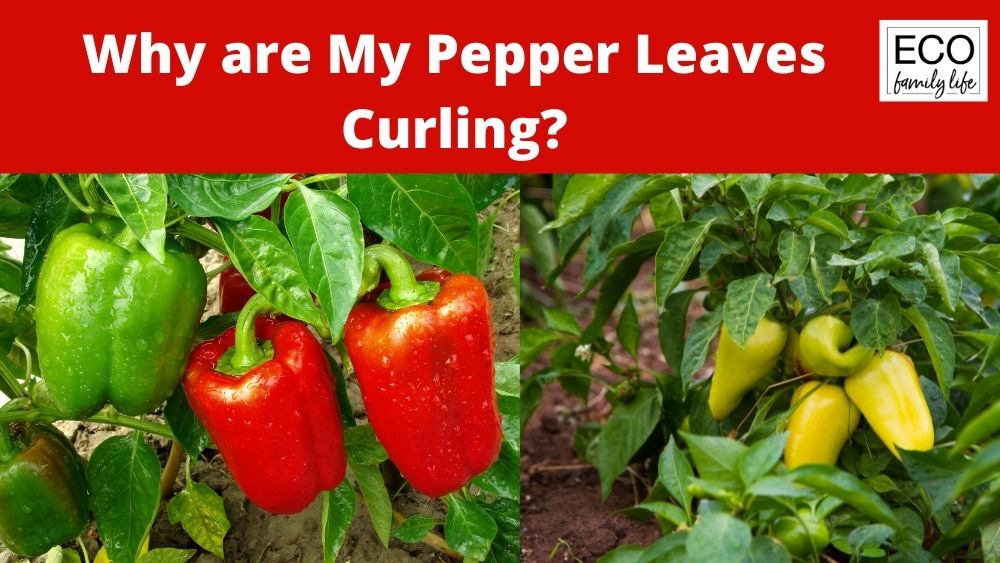
Top 10 reasons why pepper leaves curl
Here are the most common reasons why pepper leaves will curl and what you can do to solve each one.
1. Extremely hot weather
Extremely hot weather can cause pepper leaves stress and they can curl inwards to protect themselves. While peppers do love warm weather, extreme heat can cause leaf curl. This is the natural way that the plant protects itself from water loss. This slows the transpiration process or loss of water through the leaves.

When the weather begins to cool in the evening the plant will start to uncurl its leaves. Water the plant deeply at the end of the day, keeping water off the leaves. By the next morning if heat was the cause the leaves will uncurl and be open again for the next day.
2. Too much water
Overwatered pepper plants can develop curled leaves. The leaves will often look yellow as the extra water washes away the nitrogen. A lack of nitrogen will reduce the amount of chlorophyll in the leaves taking away their green color and giving them that yellow look.
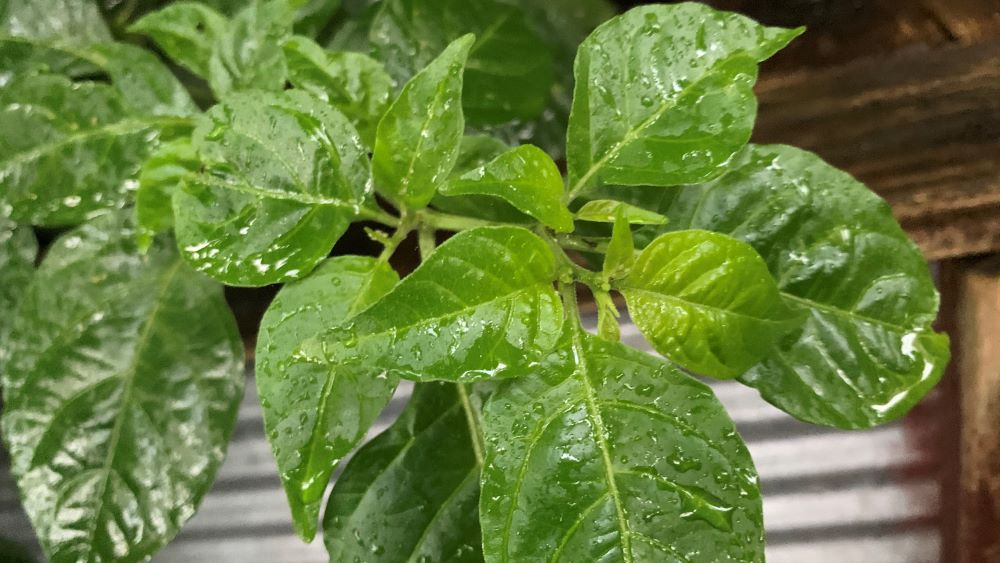
Peppers that are getting too much water can also develop black leaf tips or black spots on the leaves. The leaves can recover and the black spot will turn brown as the leaf heals. You can also remove these leaves if a few are affected.
To fix this problem reduce your watering schedule and only water the peppers when the soil is dry 1-2 inches below the soil. Give the peppers a dose of all-purpose liquid fertilizer with a balanced mix of nitrogen, potassium and phosphorus (NPK). My favorite fertilizer is liquid fish fertilizer because it is gentle and high in organic matter.
3. Fungal growth
Fungal growth on pepper leaves can cause them to curl downwards. Sooty mold can form on the leaves if they are growing in shade or if you are getting high rainfall over spring and summer. Dark patches on the leaves or gray mold can be a sign that mold.
To solve this problem you can remove some of the leaves that have a lot of mold. You can trim a few of the branches within the plant to improve air movement. Move potted pepper plants out into more sun. This will help to kill of the mold and prevent more from growing.
4. Lack of nutrients
Pepper plants that are lacking nutrients can suffer from leaf curl. There are many micronutrients that peppers need including calcium, iron, magnesium and nitrogen. Each of these deficiencies can cause leaf damage and curl.
The best way to address this problem is to prevent it in the first place. Build up the soil with aged cow manure and compost to add micronutrients to the soil. Add a handful of pelleted chicken manure to the soil and dig it through.
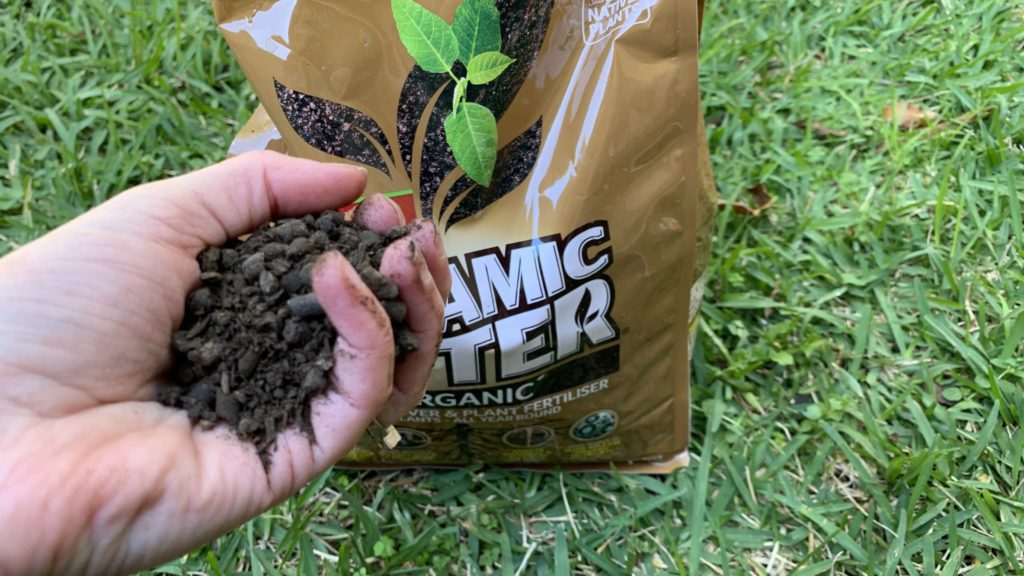
If you are growing peppers in pots or raised garden beds, fill them with premium potting soil or raised garden bed mix. I like to add a small amount of compost and aged cow manure to potting soil to boost it even more (no more than ¼ of the mix).
Do not plant peppers in the same garden bed each year if you can. Pepper plants can use up micronutrients from the soil and growing them in the same place increases the risk of this happening.
5. Not enough light
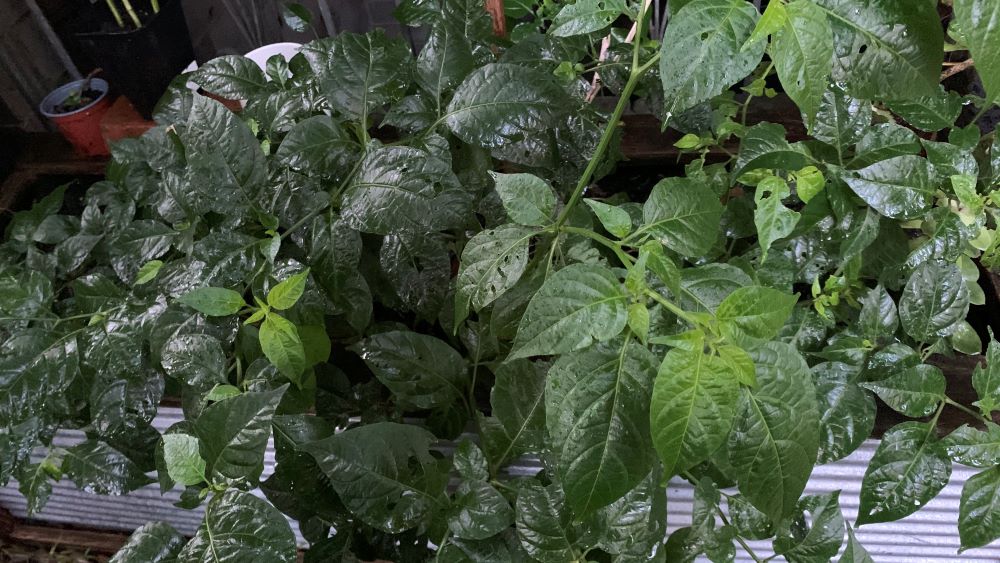
Pepper plants that are not getting enough light will start to curl. Peppers grow best in full sun where they will grow healthy green leaves and develop ripe peppers quicker.
Plants that are not getting enough light will often develop yellowing or drooping leaves that curl inwards. Leaves can also look pale and weak and the seedling may become leggy.
Pepper plants can survive in part shade but grow best if they get more than 6 hours of sun per day. Move pepper plants out into a sunny position if they are growing in a pot. Remove overhanging branches of nearby trees to give the plant more sun.
My peppers are growing near my banana tree which needs to be constantly trimmed so my peppers still get sun. Because they are growing in part shade and we have had a very rainy summer, I am now getting late developing peppers which are slowly ripening.

6. Hot winds
Hot winds can quickly cause peppers to react and curl their leaves inwards. Curled leaves are the best defense the plant has to reduce the amount of water being lost from the leaves. The plant will divert water to its stems and roots to keep the plant alive during the extreme weather.
If you know that a hot, windy day is coming then water your peppers in the morning. You can add small stakes around the outside and drape some 50% shadecloth over the top to reduce the wind damage.
Peppers will recover quickly from hot windy days if they are watered well. Water them at the end of the day but keep the water off the leaves.
7. Pests
Pests that come and suck sap from the leaves of your pepper can cause them to curl. Common sap sucking insects include aphids, thrips and spidermite which also hide on the bottom of the leaf. They will sit on the veins or the stems of the leaf.
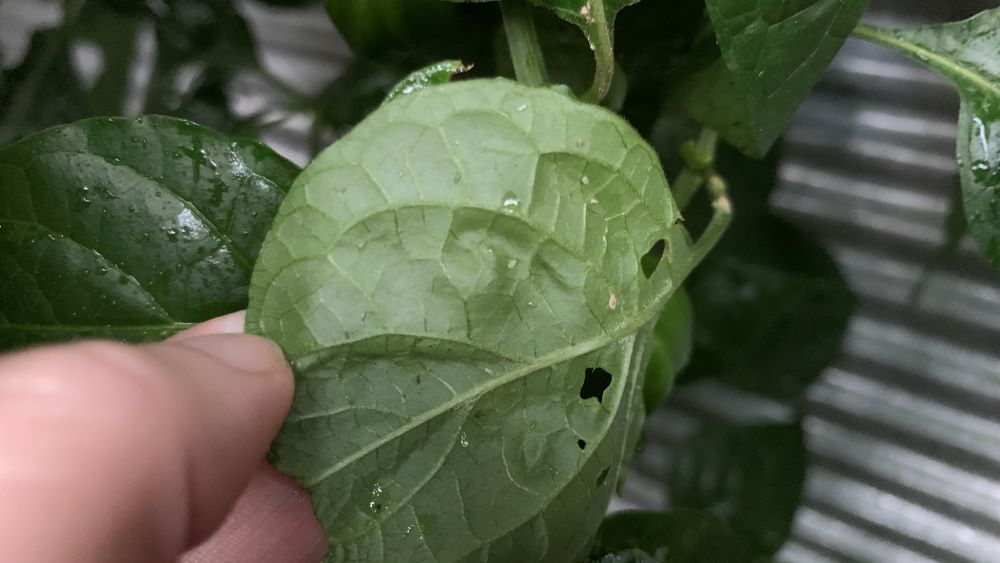
When the pests suck the sap from the leaf it causes them to curl inwards. You can get rid of these pests in a gentle way by spraying them with horticultural soaps or make some soapy water yourself and spray it on.
I also like to use neem oil, which is a concentrated oil which comes from the neem tree. They get rid of these sap sucking insects within a week or two. Just dilute neem oil according to the instructions and spray your plants every 3-4 days until the bugs are gone.
8. Root bound peppers
Peppers that are root bound will suffer and their leaves can curl. This happens because the roots will not be able to absorb the water and nutrients the plant needs. Root bound seedling need to be transplanted quickly into a new pot or garden bed.
9. Snails and slugs
Snails and slugs can eat pepper leaves causing them to curl inwards. They crawl up the plant at night from the organic matter in the soil and chew on the leaves. They then return to the soil and all that is left is some holes and some silver lines from their trails.
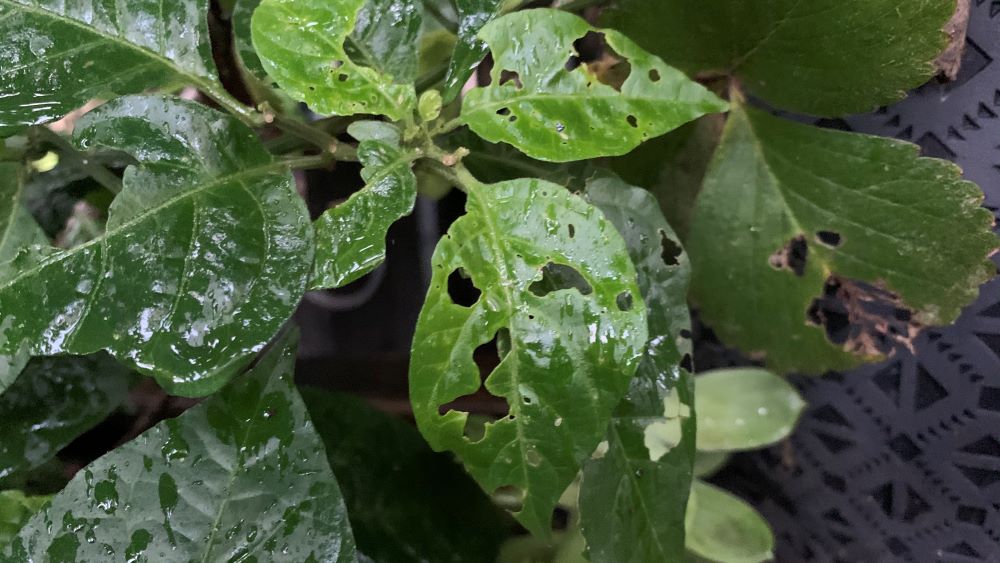
Check underneath the leaves to see if the snails and slugs are still there. Stop the snails and slugs from attacking your snails and slugs by capturing them in a beer trap. Fill a shallow saucer and place it near your pepper plants. Slugs and snails will crawl in and die keeping them away from the plants.
You can also sprinkle coffee grounds around the plant or crushed egg shells which snails and slugs hate to crawl over.
10. Viruses
Viral infections are difficult to identify but can be the cause of leaf curl on pepper plants. If pepper plant leaves are curling and you cannot identify a nutrient deficiency, pests or fungal growth then it could be a virus.
The best thing to do to address this naturally without spraying is to trim away the curled and damaged leaves. This will help to prevent the virus from spreading further across the plant or to other plants nearby.
Why are My Pepper Leaves Curling? | Summary
Pepper leaves can curl due to a stressor which could be hot wind, pests, viruses, fungal growth, a lack of nutrients or a lack of light. Peppers are hardy plants which can recover quickly. You can remove damaged leaves if they have started to turn yellow or brown and allow the plant to replace them with new leaves. Pepper plants branch rapidly so will replace the damaged leaves and branches quickly if they are given the water, nutrients and light they need.
Happy growing.
I am an accredited practicing dietitian, experienced gardener and a dedicated cook. I love writing and sharing my experience so you can learn from my successes and mistakes.
